 Lee Arnold has invented an intriguing symbolic ‘language’ that can be employed in animations to show how complicated systems work. The elements in the language are shown above, and were inspired by a concept for symbolic representation of energy flows developed by Howard T. Odum. Lee has added some rigour to the symbol set and extended it to show economic and information flows as well as physical ones, and further extended it to make animations based on the set more intuitive. Click on the first link above and watch the animation of the Bush tax cuts to get an idea of just how powerful this language is. One interesting quality of this language is that symbols in a pentagon instead of a hexagon indicate the portion of the population that must deal with systemic problems in their environment: So ‘people’ in a pentagon is ‘prisoners or slaves’ (it could also represent physically or mentally ill people), while ‘cities & nations’ in a pentagon represents ‘police or authorities’, including armies. As much as I admire the elegance and intuitiveness of this language, I was skeptical that its ‘alphabet’ was complete enough to demonstrate more sophisticated systems. Specifically, I wondered how to represent technology. Going through Lee’s animations, I noted that he takes the liberty of expanding the symbol set whenever necessary, trying to make the additions as intuitive as possible, and explaining them during his narration when they are not. So, for example, a deep purple hexagon (the same colour as the nuclear source, a wry statement by Lee?) with a flag on it represents the government of that country. By analogy, we might consider technology (and information databases) as ‘storage’ of information, and use the silo symbol with contents coloured black to represent it. The proof of the robustness of any language is found in its use, so I decided to try to map how I would represent the problem of modern human overpopulation using ecolanguage. I drew this problem using systems thinking symbols last year, and it looked like this: Using ecolanguage, I would start with the ‘prehistoric’ population balance model, as follows: Next we would add the impact of disease and intertribal conflict, as follows: Soon, predators disappear from the picture entirely. And, as the population grows, so does the demand for food, which in turn drives demand for new agricultural technologies. In the picture below, these new variables grow the size of the available food supply, and that in turn causes the purple hexagon to swell even further (you may have noticed that I changed the brown hexagon to a pentagon, to represent the prison-like conditions many farmed animals live with): As human population begins to grow out of control, despite the increase in the number and intensity of wars and epidemic diseases, new ways must be found to increase the efficiency and scale of human activity to feed all the new mouths. The industrial revolution ratchets up human production another order of magnitude, bringing with it the demand for, and expectation of, growth without limit. Unnoticed by most, the exponential growth of agricultural production, industrialization and land use for human habitats is beginning to tax the ecosystem that man had always assumed to be boundlessly resilient: For the first time, information is beginning to have an impact on human population. Awareness of the unsustainability of exponential growth in human numbers is causing some people to engage in family planning. And as land becomes scarce and new frontiers hard to find, competition for land is driving up prices and causing most women to enter the work force and delay having children, and as a consequence have an average of 0.5-1.0 fewer children than would ideally like. And new endemic diseases like AIDS are beginning to push death rates back up in some countries. On the other side of the scale, mainstream religions pressure parents not to use birth control or abortion services, and the sheer struggle for survival forces many children into the labour force, depriving them of an education that could teach them about family planning. So on balance, information has almost no net effect on population: But in the case of our species, it is unlikely that wars, even nuclear ones, or diseases, which are once again on the upswing, will be enough to bring human population down far enough or fast enough to prevent the extinction-level devastation to our ecosystem that is already in progress, or even to significantly reduce human numbers. There is, of course, always the possibility that some group will choose to precipitate Armageddon — the information and resources to do so are readily available to anyone with reasonable intelligence and perseverance, and access to the Internet and to some corruptible public servants. The growing popularity of suicide bombs, perhaps the ultimate expression of stress-related conflict, is certainly cause for concern. But we can’t put that genie back in the bottle — the information is out there, the means, motive and opportunity, and if that’s the way the world ends, there’s no stopping it now. If either of the two icons in the lower left explodes, the model tells us that humanity could come close to disappearing (not with a bang, but with a whimper). Ironically, a shortage of food is actually a more likely brake on unsustainable growth. Today there is more food than humankind can eat — such a surplus that we can afford to feed most of it to farmed animals. Worldwatch tells us that more people today die from obesity-related diseases than from malnutrition. There are six problems, however:
Terrorists might find it easier to tamper with our vulnerable food supply than to attack us directly. Or a small set of natural plant diseases might quickly eradicate much of the world’s food supply. But it’s more likely that the end of (cheap) oil will bring about the end of population growth, or even reverse it. Here’s the scenario: Oil quadruples in cost as demand (rising by double digits every year in much of Asia) outstrips available supply. That more than quadruples the cost of food, since oil is needed both to grow it and to move it. Inflation and interest rates soar to double digits, the housing market collapses, followed by the stock market, the US forfeits on its debt repayments, consumers stop buying anything other than food and a depression deeper than that in the 1930s ensues. Meat becomes unaffordable for almost everyone, so cattle, pig and poultry farming virtually cease, and land is replanted with crops, especially high-protein crops. Agriculture shifts back to community-based farming because long-distance transportation is unaffordable. Let’s suppose this depression occurs in the 2010s and only impacts birth-rates as much as the depression in the 1930s did (35%). A global drop of birth rates of this amount from current levels, combined with, say, a ten year long spike in death rates in third world countries with exhausted soils or dependent on imported foods, would essentially bring us to global ZPG immediately. And if a combination of depression-style conservation, population movement (from cool temperate and tropical to warm temperate and from suburbs in to where transportation costs are less, or out closer to food markets), and shift to virtual work (so that, say, half the population works from home) were to occur, combined with a switch to a vegetarian and more nutritious diet, the aggregate global footprint could suddenly fall by, say, 50% (mostly in the ‘developed’ world, where footprint/person today is seven times what it is in the ‘developing’ world). That would take our global ecological impact back to 1980s levels. This still isn’t sustainable, but it would be sufficient to buy us some breathing room. But that would only work if it occurred soon enough — if it took until the 2030s, the extra 2 billion people (9 billion instead of 7) and the extra 25 billion acres of global footprint (75 billion instead of 50) would probably put us past the point of no return ecologically, not to mention greatly increasing the likelihood that the nuclear/epidemic/terrorist scenario mentioned earlier would come into play, and that extreme and disruptive weather changes would exacerbate the crisis. The problem is that if this depression occurs in the next decade, we may construe it as having been caused simply by incompetent and irresponsible fiscal and monetary policy, rather than as a warning of the consequences of unsustainable growth, consumption and overpopulation. If we squander that opportunity to reduce our footprint to a sustainable 15 billion acres from today’s 40 billion, and keep it there, it may well be an unsurmountable challenge to reduce it from the 100 billion plus acre level it will be at in the latter half of this century. (Thanks to Arnold Lee for answering my questions to him by e-mail so promptly, and for encouraging me to play with his invention. My next app will be a toughie: showing how organizations convert capital from physical to financial to intellectual and vice versa — information doesn’t follow the laws of thermodynamics.) |
Navigation
Collapsniks
Albert Bates (US)
Andrew Nikiforuk (CA)
Brutus (US)
Carolyn Baker (US)*
Catherine Ingram (US)
Chris Hedges (US)
Dahr Jamail (US)
Dean Spillane-Walker (US)*
Derrick Jensen (US)
Dougald & Paul (IE/SE)*
Erik Michaels (US)
Gail Tverberg (US)
Guy McPherson (US)
Honest Sorcerer
Janaia & Robin (US)*
Jem Bendell (UK)
Mari Werner
Michael Dowd (US)*
Nate Hagens (US)
Paul Heft (US)*
Post Carbon Inst. (US)
Resilience (US)
Richard Heinberg (US)
Robert Jensen (US)
Roy Scranton (US)
Sam Mitchell (US)
Tim Morgan (UK)
Tim Watkins (UK)
Umair Haque (UK)
William Rees (CA)
XrayMike (AU)
Radical Non-Duality
Tony Parsons
Jim Newman
Tim Cliss
Andreas Müller
Kenneth Madden
Emerson Lim
Nancy Neithercut
Rosemarijn Roes
Frank McCaughey
Clare Cherikoff
Ere Parek, Izzy Cloke, Zabi AmaniEssential Reading
Archive by Category
My Bio, Contact Info, Signature Posts
About the Author (2023)
My Circles
E-mail me
--- My Best 200 Posts, 2003-22 by category, from newest to oldest ---
Collapse Watch:
Hope — On the Balance of Probabilities
The Caste War for the Dregs
Recuperation, Accommodation, Resilience
How Do We Teach the Critical Skills
Collapse Not Apocalypse
Effective Activism
'Making Sense of the World' Reading List
Notes From the Rising Dark
What is Exponential Decay
Collapse: Slowly Then Suddenly
Slouching Towards Bethlehem
Making Sense of Who We Are
What Would Net-Zero Emissions Look Like?
Post Collapse with Michael Dowd (video)
Why Economic Collapse Will Precede Climate Collapse
Being Adaptable: A Reminder List
A Culture of Fear
What Will It Take?
A Future Without Us
Dean Walker Interview (video)
The Mushroom at the End of the World
What Would It Take To Live Sustainably?
The New Political Map (Poster)
Beyond Belief
Complexity and Collapse
Requiem for a Species
Civilization Disease
What a Desolated Earth Looks Like
If We Had a Better Story...
Giving Up on Environmentalism
The Hard Part is Finding People Who Care
Going Vegan
The Dark & Gathering Sameness of the World
The End of Philosophy
A Short History of Progress
The Boiling Frog
Our Culture / Ourselves:
A CoVid-19 Recap
What It Means to be Human
A Culture Built on Wrong Models
Understanding Conservatives
Our Unique Capacity for Hatred
Not Meant to Govern Each Other
The Humanist Trap
Credulous
Amazing What People Get Used To
My Reluctant Misanthropy
The Dawn of Everything
Species Shame
Why Misinformation Doesn't Work
The Lab-Leak Hypothesis
The Right to Die
CoVid-19: Go for Zero
Pollard's Laws
On Caste
The Process of Self-Organization
The Tragic Spread of Misinformation
A Better Way to Work
The Needs of the Moment
Ask Yourself This
What to Believe Now?
Rogue Primate
Conversation & Silence
The Language of Our Eyes
True Story
May I Ask a Question?
Cultural Acedia: When We Can No Longer Care
Useless Advice
Several Short Sentences About Learning
Why I Don't Want to Hear Your Story
A Harvest of Myths
The Qualities of a Great Story
The Trouble With Stories
A Model of Identity & Community
Not Ready to Do What's Needed
A Culture of Dependence
So What's Next
Ten Things to Do When You're Feeling Hopeless
No Use to the World Broken
Living in Another World
Does Language Restrict What We Can Think?
The Value of Conversation Manifesto Nobody Knows Anything
If I Only Had 37 Days
The Only Life We Know
A Long Way Down
No Noble Savages
Figments of Reality
Too Far Ahead
Learning From Nature
The Rogue Animal
How the World Really Works:
Making Sense of Scents
An Age of Wonder
The Truth About Ukraine
Navigating Complexity
The Supply Chain Problem
The Promise of Dialogue
Too Dumb to Take Care of Ourselves
Extinction Capitalism
Homeless
Republicans Slide Into Fascism
All the Things I Was Wrong About
Several Short Sentences About Sharks
How Change Happens
What's the Best Possible Outcome?
The Perpetual Growth Machine
We Make Zero
How Long We've Been Around (graphic)
If You Wanted to Sabotage the Elections
Collective Intelligence & Complexity
Ten Things I Wish I'd Learned Earlier
The Problem With Systems
Against Hope (Video)
The Admission of Necessary Ignorance
Several Short Sentences About Jellyfish
Loren Eiseley, in Verse
A Synopsis of 'Finding the Sweet Spot'
Learning from Indigenous Cultures
The Gift Economy
The Job of the Media
The Wal-Mart Dilemma
The Illusion of the Separate Self, and Free Will:
No Free Will, No Freedom
The Other Side of 'No Me'
This Body Takes Me For a Walk
The Only One Who Really Knew Me
No Free Will — Fightin' Words
The Paradox of the Self
A Radical Non-Duality FAQ
What We Think We Know
Bark Bark Bark Bark Bark Bark Bark
Healing From Ourselves
The Entanglement Hypothesis
Nothing Needs to Happen
Nothing to Say About This
What I Wanted to Believe
A Continuous Reassemblage of Meaning
No Choice But to Misbehave
What's Apparently Happening
A Different Kind of Animal
Happy Now?
This Creature
Did Early Humans Have Selves?
Nothing On Offer Here
Even Simpler and More Hopeless Than That
Glimpses
How Our Bodies Sense the World
Fragments
What Happens in Vagus
We Have No Choice
Never Comfortable in the Skin of Self
Letting Go of the Story of Me
All There Is, Is This
A Theory of No Mind
Creative Works:
Mindful Wanderings (Reflections) (Archive)
A Prayer to No One
Frogs' Hollow (Short Story)
We Do What We Do (Poem)
Negative Assertions (Poem)
Reminder (Short Story)
A Canadian Sorry (Satire)
Under No Illusions (Short Story)
The Ever-Stranger (Poem)
The Fortune Teller (Short Story)
Non-Duality Dude (Play)
Your Self: An Owner's Manual (Satire)
All the Things I Thought I Knew (Short Story)
On the Shoulders of Giants (Short Story)
Improv (Poem)
Calling the Cage Freedom (Short Story)
Rune (Poem)
Only This (Poem)
The Other Extinction (Short Story)
Invisible (Poem)
Disruption (Short Story)
A Thought-Less Experiment (Poem)
Speaking Grosbeak (Short Story)
The Only Way There (Short Story)
The Wild Man (Short Story)
Flywheel (Short Story)
The Opposite of Presence (Satire)
How to Make Love Last (Poem)
The Horses' Bodies (Poem)
Enough (Lament)
Distracted (Short Story)
Worse, Still (Poem)
Conjurer (Satire)
A Conversation (Short Story)
Farewell to Albion (Poem)
My Other Sites

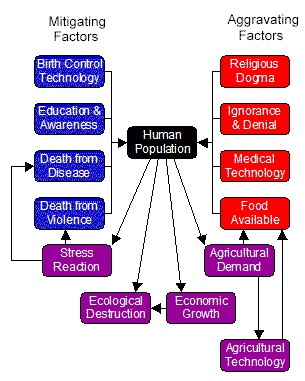

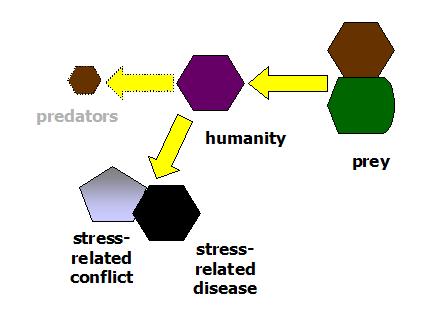
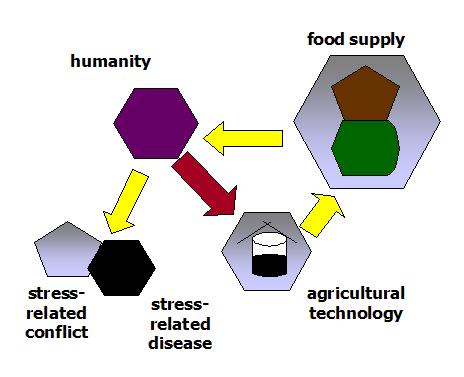
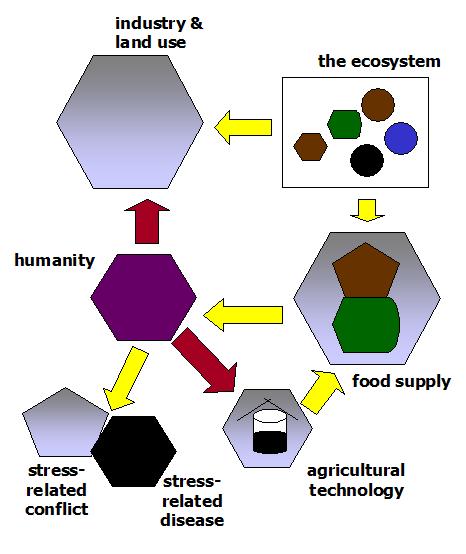
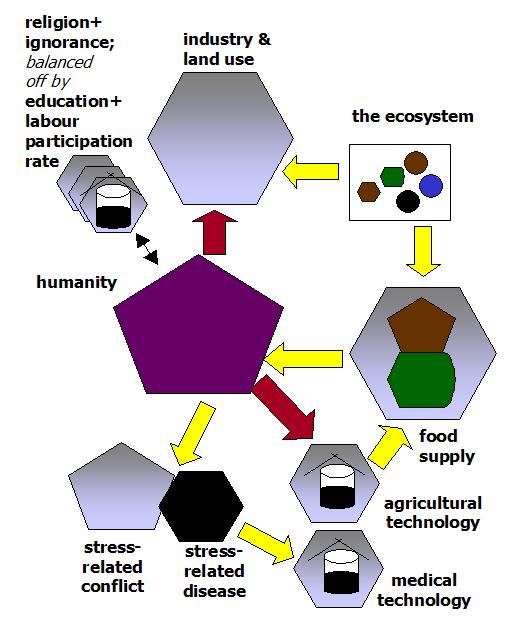




Ecolanguage looks like it could be a useful tool.However, like any tool… garbage in, garbage out. There were so many falsehoods,inconsistencies and just plain juvenile errors in your scenario it was almost laughable. The worst: “Oil quadruples in cost as demand (rising by double digits every year in much of Asia) outstrips available supply. That more than quadruples the cost of food, since oil is needed both to grow it and to move it.”Wow! we must be eating oil! In actuality, the amount spent on energy to grow food plus the amount spent on energy to transport food is a very small percentage of the total cost of the food. Somewhere in the single digits percentagewise.Oil prices have gone from $20 barrel a few years ago to $65 a barrel today. Have food prices tripled? Have they doubled? In the twelve months till August of this year food prices increased 2% !see: http://www.bls.gov/news.release/cpi.nr0.htmTake a look at:http://www.ers.usda.gov/Briefing/FoodPriceSpreads/trends/ if you want to some more facts about the energy componet of food instead of “Peak Oiler” hype.
Once again Dave you have entered the realm of the bizarre. This really is highly illogical. I can’t believe anyone would enjoy modeling the end of the world. Well maybe you’re a masochist? Seriously, do you enjoy modeling death and destruction and all round negativity? And if you really believe in the apocolypse then why not accept it and go enjoy yourself? People do die, accept it, there’s nothing you can do about death except enjoy your life. Or focus on negativity and be unhappy, its your choice.
On tools: Powerpoint can handle this very well you could get one animation on one slide. I might try it if I get time.On system: I like Peter Senges ( Fifth Discipline) system thinking as it shows factors which tend to increase and balancing factors which decrease. The ecolang struggles a bit in this area as witnessed by the explanation of “Money”Having said that representing systems like this always helps in creating understanding – as the first commenter saw, or thought they saw, the logical flaws in your thinking – so maybe ecolanguage is a way forward. I will definately have a go at symbolizing the gift society/currency.By the way: we ARE eating oil, if you include all energy spent from growing through retail through cooking to garbage disposal.
I really liked this post because of its utility. I remember seeing his animation on the money flow from the Bush Taxt Cuts and it was an extremely effective way of transferring knowledge in a simple and elegant manner. I have a question on what would be the most useful type of programs to use in order to make animations like this, I can understand powerpoint or an animation as far as progressing through slides, but which program to use to make the slides?As far as your first two comments, don’t let them discourage you from thinking about the future (although I know that you won’t). It is vital that some portion of the population is imagining futures of all different possibilities, so that we can use science to verify what we are seeing and so that we can predict and prevent unpleasurable things from happening to the best of our ability.To Jon Deely, you are ignoring some critical aspects of how the world works. The biggest aspect is that you are ignoring momentum. The world doesn’t react instantaneously to inputs. There is a lag time and there is energy storage that must be factored into the equation. In this case you have to pay attention to where the money goes. There is not a direct relation between input cost and food cost. The government subsidizes food to a large degree, so you have to account for how much the government is inputting into food production to offset increased oil costs. Also farmers aren’t directly setting their sell price, they are given a certain price at a given time and then they decide if that is acceptable to sell at or if they’ll be able to get a better price in the near future. This means that if they aren’t able to get the price they want at any point in the near future (before the grain rots) then they have to sell it for the price available to them, meaning that they take a loss as far as profits are concerned. That loss isn’t shown on the price of food. Only after time, will the market shift to correct that (as producers won’t produce forever without making a profit, but they will endure short term hardships). Another significant difference is that as of right now, supply of oil is still relatively close to demand for oil, thus the price hasn’t sky rocketed too much yet, although that is separate from most of your arguments.To Zach, I enjoy a most of Dave’s articles and I think that I think in a somewhat similar manner to him, so maybe my experience can help you relate to him a bit. I find that I enjoy using my brain and my creativity in particular to solve problems. The problem itself gets abstracted and is worked on without my emotions and fears getting to involved in the process. To me, this means that I can analyze how the world would end without feeling bad or disgusted by it. I suppose its similar to how Bush can start a war without really tangibly understanding and feeling the deaths of our soldiers. All the people become a statistic or a black box and all that matters is their governing equations and forces to determine how they react. There is no pain felt by this analysis and its not a negative emotion. It is a positive emotion because you are working on the solution to preventing actual pain. You are being productive and using yourself to overcome obstacles, which is what humans are naturally designed to do. Humans from the dawn of creation have had to deal with threats to their individual and collective existances. We are around today, because our ancestors did something about their problems. They didn’t close their eyes and remain completely ignorant to their threats. Its like driving at a brick wall. The way that you were talking, you would close your eyes and accept that you were going to crash and ignore your own power in the world. Another option is that you can keep your mind clear, realize that you have the power to do something which in this case would be to step on the brakes. By stepping on the brakes you may not completely prevent the collision, but you can reduce the force with which you collide into the wall and thus reduce the chance of death or pain that you would feel.In a real world example, you can choose to start living more sustainably as a society. This requires little effort, but a consicous change in the way that we think. It would require decreasing the population of humans on the earth while we still have the resources to feed everyone. Maybe we can’t prevent the extinction of many species, but we can prevent the complete collapse of the world as we know it that is inevitable if we just sit here thinking we are powerless and twiddle are thumbs as we wait to starve to death.
medaille, I think I get what you’re saying. For me abstracting, and pursuing ideas which have no basis in my personal reality or practical application, was simply a form of mental masterbation used as an emotion repression mechanism. My emotions never went away they where just temporarily removed from my conciousness, and afterwards becoming calm was difficult because this junk was percolating away while I was off “entertaining” myself. That is how my mind works anyway. If I allow myself to jump from branch to branch like a wild monkey, flinging poo along the way, I repress undesirable emotions but I end up miserable. By my definition power is the ability to affect events in the real world. What power do I have? None. There’s a good problem for you abstract thinkers. How do you teach people to use their power in the world to actually really get things done?
Appreciate the comments. I’m going to start with some less controversial apps, because I don’t want the arguments over the logic of the relationships to detract from the enormous utility of the tool. I’d also like to thank Lee for his kind comments and additional amplifications on EcoLanguage. I’m an evangelist — as a means of showing systems thinking and scenarios dynamically, this tool really has legs.